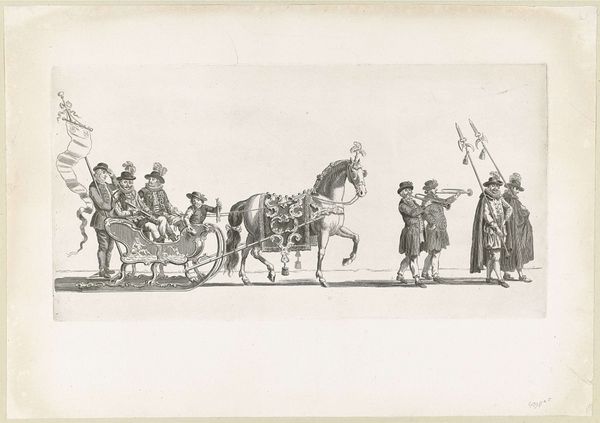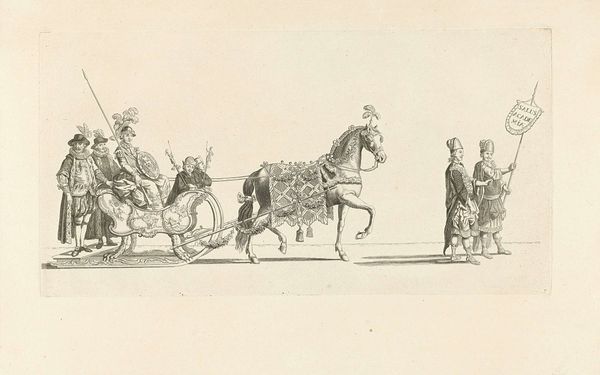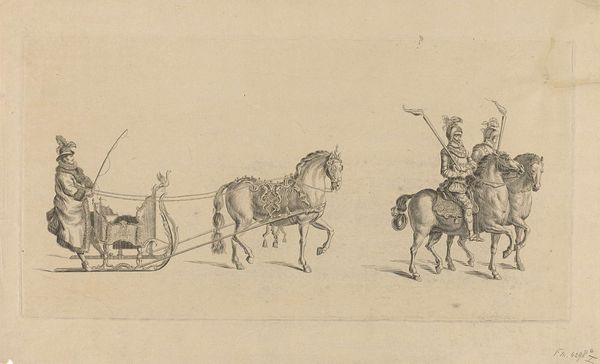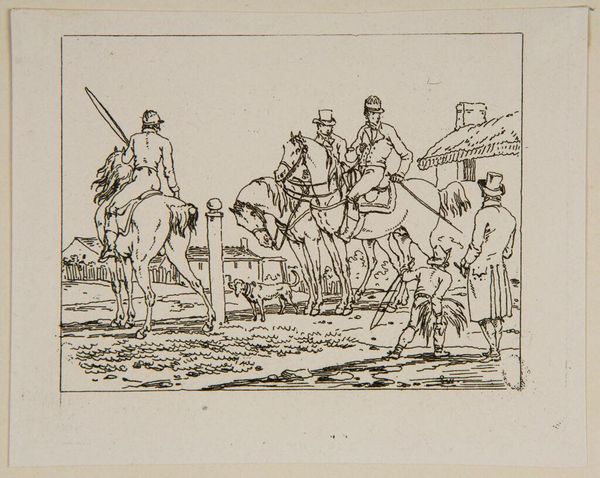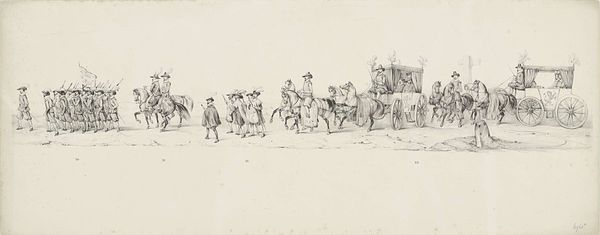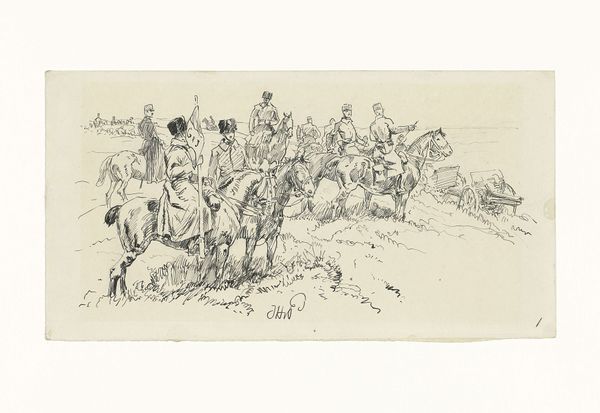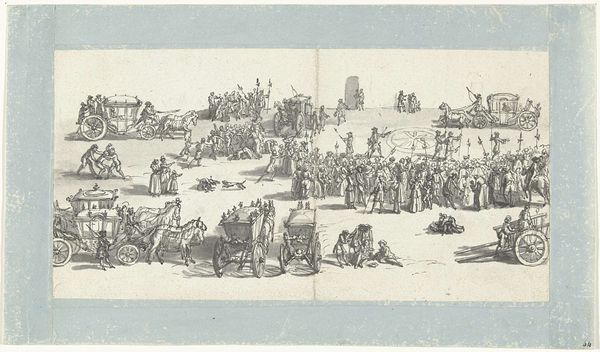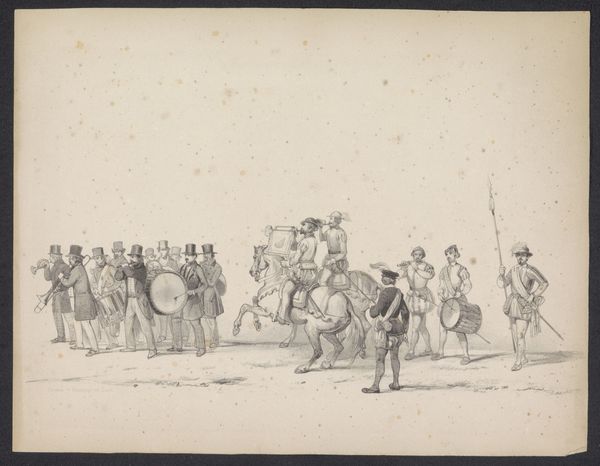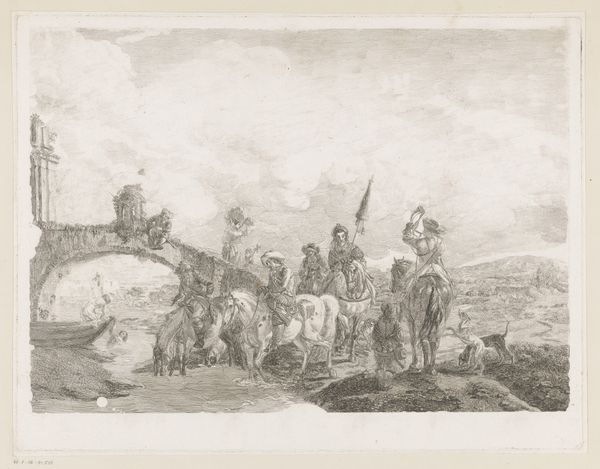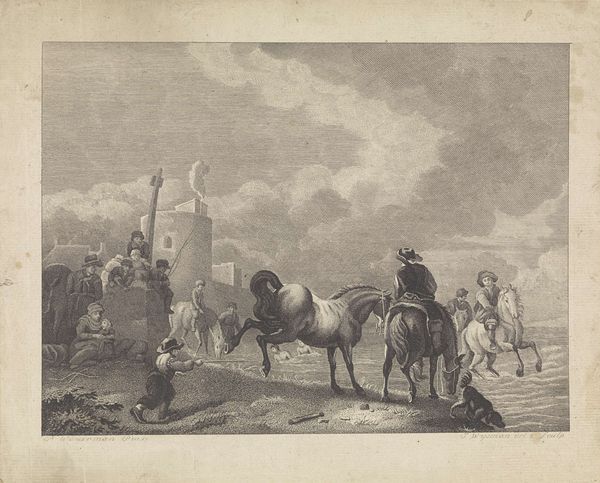
#
quirky sketch
#
pen sketch
#
personal sketchbook
#
idea generation sketch
#
sketchwork
#
pen-ink sketch
#
sketchbook drawing
#
storyboard and sketchbook work
#
sketchbook art
#
initial sketch
Dimensions: height 225 mm, width 442 mm
Copyright: Rijks Museum: Open Domain
Curator: Immediately, there’s a certain crispness to this pen-and-ink sketch. Its detail is compelling. Editor: That's Nicolaas van der Worm's "Vierde slede," created in 1776. It roughly translates to "Fourth Sleigh." The delicate lines belie its potential as more than a mere sketchbook doodle; it may hint at social critiques. Curator: A critique of what, exactly? Is it commenting on labor given its medium of creation and that sleigh, obviously requiring significant work in terms of construction, the leather, metal, perhaps even precious stones, the outfits of those depicted, the upkeep of the horses and all related tack, etc? Editor: Indeed, thinking about van der Worm, his life, his privilege: the sketchbook, its paper, the ink, that’s access. Now look at the figures being conveyed on the sledge, in contrast with the riders. Who do we see privileged in their staging, ornamentation, and elevation? Curator: Well, consider the very material nature of transportation in 18th-century Netherlands. It represents power dynamics. Owning such ornate conveyances, that means capital. The implied exploitation becomes central to its narrative. Editor: Absolutely, because who are they leaving in their wake? It brings up questions of gender roles too. Is the sleigh-rider a matriarch, conveying power in a patriarchal system? Does this presentation challenge or reinforce these existing hierarchies? What is the symbolic role of that spear the figure in the sleigh is holding? Is this about a queen, the Dutch East India Company? Curator: This piece makes one ruminate on Dutch identity during that period. There’s an inherent tension between the prosperity facilitated through colonial exploitation and the perceived "golden age" – could we say van der Worm presents a snapshot of complicity? A privileged individual using privileged materials to hint at inequality, without perhaps actually challenging anything. Editor: And isn't that dynamic at the core of much art created during that era? Exploring how these narratives reflect the artists themselves helps unearth difficult truths about historical social dynamics and their lingering impact on art history today. Curator: It is an excellent jumping-off point, really. Now I want to explore how sleighs functioned, their place in trade, social ritual, all that. Editor: It provokes necessary discussions on art’s complex entanglement with wealth, identity, and the social context of its creation. A seemingly simple sketch offers much food for thought.
Comments
No comments
Be the first to comment and join the conversation on the ultimate creative platform.

